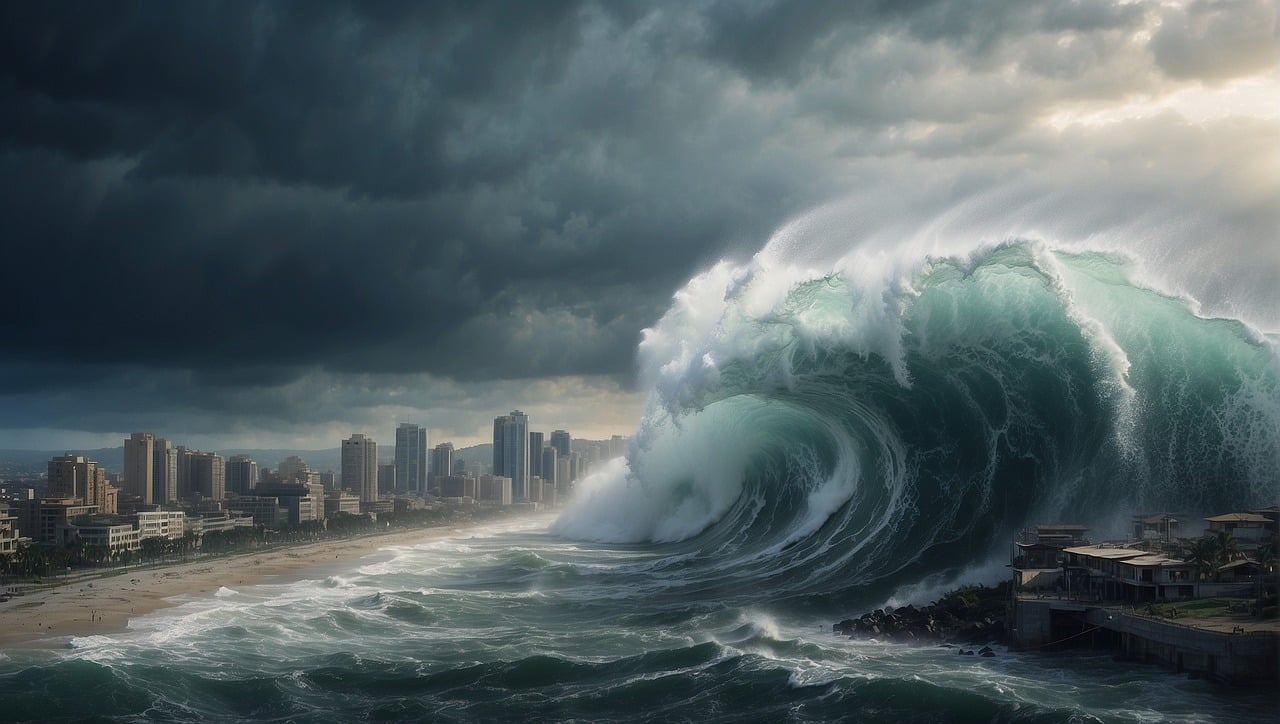by Martin Haffner Associate Editor
As the spotlight turns increasingly toward the Pacific region, the intersection of economic growth and climate resilience emerges as a critical focus. Nations throughout the Pacific face unique challenges, from rising sea levels and extreme weather events to economic vulnerabilities exacerbated by global supply chain disruptions. Recognizing these challenges, Pacific nations are adopting innovative strategies aimed at fostering sustainable economic development while enhancing climate resilience.
The Importance of Integrated Approaches
For Pacific island countries, the pathway to prosperity must integrate economic growth with environmental sustainability. This integrated approach is essential not only to address immediate challenges posed by climate change but also to ensure long-term viability. Central to this strategy is the recognition that economic growth and environmental health are not mutually exclusive; in fact, they can reinforce one another.
Key Strategies for Driving Economic Growth
- Sustainable Tourism Development:
The Pacific is renowned for its stunning natural beauty and rich cultural heritage, making tourism a significant driver of economic growth. Sustainable tourism initiatives are key to harnessing this potential while preserving local ecosystems. By promoting responsible travel practices and investing in eco-friendly infrastructure, Pacific nations can attract tourists who value sustainability, thereby generating revenue without compromising their natural resources. - Blue Economy Initiatives:
The blue economy, centered around the sustainable use of ocean resources, represents a vital growth area for Pacific countries. Leveraging marine resources can create jobs, enhance food security, and drive innovation. Initiatives may include sustainable fishing practices, aquaculture development, and marine tourism. Countries such as Fiji and Palau have already begun to implement policies that balance economic development with ocean conservation. - Renewable Energy Investment:
Transitioning to renewable energy sources is critical for reducing dependency on fossil fuels and enhancing energy security. The Pacific region possesses abundant renewable energy resources, including solar, wind, and geothermal energy. Investments in these technologies not only lower greenhouse gas emissions but also create jobs in emerging industries. Nations like Samoa and Tonga are making strides in adopting renewable energy solutions while promoting energy efficiency. - Agricultural Resilience and Food Security:
Agriculture remains a cornerstone of economic activity in the Pacific, but climate change poses significant threats to food security. Strategies to enhance agricultural resilience include promoting climate-smart agriculture practices, diversifying crops, and investing in research and development for climate-resilient food systems. These measures not only boost local economies but also protect the region’s food supply from climate-related disruptions.
Building Climate Resilience
A focused approach toward climate resilience involves not just reactive measures but proactive strategies that anticipate and mitigate potential impacts of climate change. Here are key components that Pacific nations are integrating into their growth plans:
- Community Engagement and Education:
Building resilience requires active participation from local communities. Engaging communities in decision-making processes fosters a sense of ownership and enhances the effectiveness of climate policies. Educational initiatives can increase awareness and empower communities to adopt sustainable practices, becoming active participants in both economic growth and climate resilience. - Infrastructure Development:
Investing in climate-resilient infrastructure is crucial for protecting communities and enhancing economic opportunities. This includes upgrading transportation systems, developing flood defenses, and improving water management systems. Resilient infrastructure acts as a safeguard against climate-related disasters, ensuring that economic activities can continue even in adverse conditions. - Access to Climate Finance:
Securing funding to support sustainability initiatives is paramount. Many Pacific nations are turning to international financial mechanisms, such as climate adaptation funds and green bonds, to finance their resilience projects. By tapping into these resources, governments can support infrastructure upgrades, renewable energy projects, and disaster preparedness programs.
Collaborative Regional Efforts
Regional cooperation is vital for maximizing the effectiveness of these strategies. Collaborations such as the Pacific Islands Forum and the Blue Pacific Controversy emphasize collective action toward sustainability and climate resilience. By sharing resources, knowledge, and best practices, Pacific nations can enhance their individual and collective capacities to tackle the challenges of climate change and economic volatility.
The Pacific region stands at a critical juncture where the imperative for both economic growth and climate resilience is undeniable. By embracing integrated strategies that align economic development with environmental sustainability, Pacific nations can forge a path toward a prosperous future. Through sustainable tourism, blue economy initiatives, renewable energy investment, and community engagement, they can build resilient economies capable of withstanding the challenges of climate change. Ultimately, the success of these strategies will not only enhance the well-being of Pacific communities but also set a powerful precedent for sustainable development globally.



